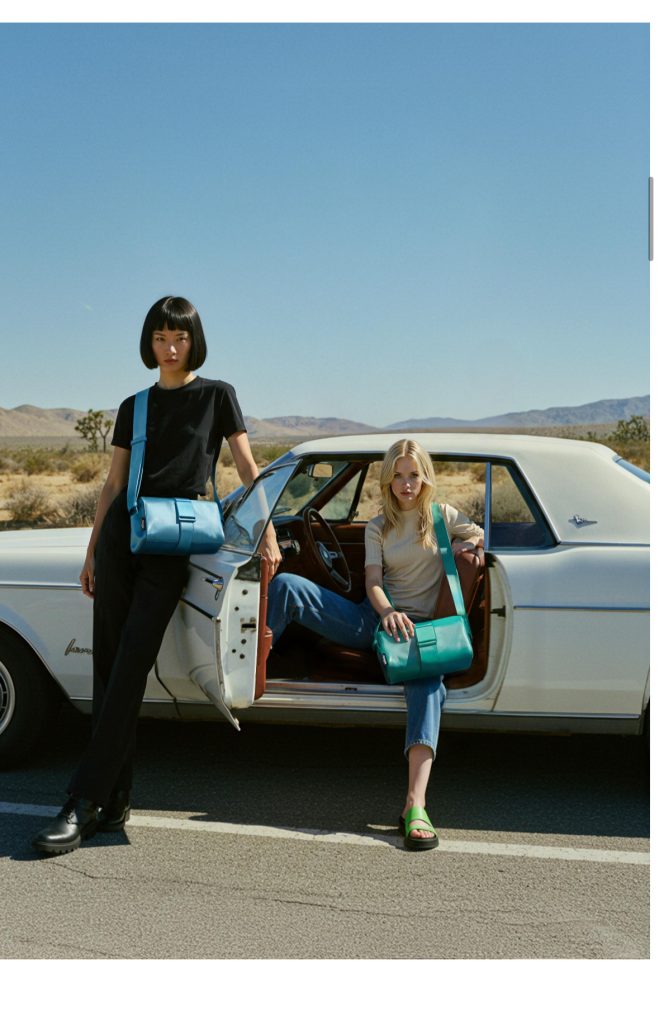Research Question
How can fashion brands ensure that AI-generated visual content preserves, rather than undermines, consumers’ emotional connection to the brand?
Rationale
This first intervention aimed to test whether consumers’ emotional acceptance of AI-generated advertising could shift rapidly when exposed to specific visual elements. Prior research suggests that consumer acceptance of AI advertising is shaped by the verisimilitude (realism) and vitality of the visuals, whereas excessive synthesis tends to evoke a sense of eeriness, reducing acceptance (Gu et al., 2024). Based on this, I designed an intervention focusing on realism as a key factor.
Method
Task: Participants viewed a set of “highly realistic” AI-generated advertising images.
Objective: To observe how their attitudes towards AI advertising evolved across three stages:
- Original opinion – their general perception of AI advertising.
- Immediate reaction – their response to a specific AI-generated image.
- Impact on brand connection – whether and how the image influenced their emotional link with a brand.
Findings
| Participant | 1. General opinion of AI ads | 2. Reaction to AI-generated images | 3. Impact on brand emotional connection |
| 48M, brand owner | Positive; depends on professional design and logic. | Very realistic, consistent with brand image.( figure 1 ) | No impact; “looks real, cannot tell the difference.” |
| 33F, private jet manager | Thinks AI looks fake; tolerates it for trusted brands, dislikes AI models for influencer brands. | Looked very realistic, aligned with brand.( figure 1 ) | Some impact due to missing “real-life connection,” but more accepting than before. |
| 40M, artist | Sees AI as “too perfect, mechanical, lacking warmth.” | Could not distinguish AI from real photos; perception shifted.( figure 1 ) | Still prefers human warmth and emotional resonance. |
| 33F, hospital executive | Indifferent for trusted brands; rejects only if it feels “too fake.” | Surprised that AI could look so real.( figure 1 ) | If realistic, no impact on brand emotions. |
| 9F, student | Finds food ads unappealing if models look fake; prefers real humans for appetite and safety. | AI looked realistic, less scary, more willing to try.( figure 2 ) | Acceptable if realistic, since she “can’t tell the difference.” |
| 37F, art professional | Initially disliked AI as “cold and unreliable.” | Realistic AI looked more natural than over-retouched human ads.( figure 1 ) | If realistic and creative, could even improve brand evaluation. |
| 25F, designer | Negative; stressed brands need originality. | Realistic, but still lacked “human warmth and thought.”( figure 1 ) | Depends on which parts were created by AI and whether designers were involved. |
Key Insights
- Realism reduces resistance – When AI visuals appeared sufficiently realistic, most participants shifted from rejection to greater acceptance, with some even finding them more natural than overly retouched ads.
- Brand trust acts as a buffer – Consumers were more tolerant of AI-generated visuals when associated with trusted brands. For unfamiliar or influencer-driven brands, vitality and authenticity were crucial.
- Lack of warmth – Many participants highlighted that AI-generated visuals felt “too perfect” and lacked human creativity and resonance.
- Context matters – Realism was most critical in food advertising, directly influencing appetite and perceived safety, while fashion advertising emphasised style alignment and warmth.
- Generational differences – Younger participants (e.g., children) were drawn to animated AI visuals but ultimately still considered human-based ads more emotionally powerful.
- Role of designers – Some participants stressed that completely replacing human creativity with AI risks weakening originality and brand trust.
Preliminary Conclusions
- Verisimilitude (realism) is a key factor in reducing consumer resistance to AI advertising.
- Brand trust and familiarity influence how tolerant consumers are towards AI-generated visuals.
- Warmth and imperfection remain weak points of AI visuals; even highly realistic images may lack “human touch.”
Summary: The findings indicate that consumer attitudes towards AI-generated brand visuals can shift quickly depending on specific elements. If brands follow certain psychological , they can leverage AI tools to enhance efficiency while minimising negative effects on consumers’ emotional connection to the brand.
References
- Gu, C., Jia, S., Lai, J., Chen, R. and Chang, X. (2024) ‘Exploring Consumer Acceptance of AI-Generated Advertisements: From the Perspectives of Perceived Eeriness and Perceived Intelligence’, Journal of Theoretical and Applied Electronic Commerce Research, 19(3), pp. 2218–2238. Available at: https://www.mdpi.com/0718-1876/19/3/108 (Accessed: 14 August 2025).

Figure 1. Promotional visual provided by Lavie Company (Lavie, 2025).

Figure 2. AI-generated visual created by the author for research intervention, using ChatGPT (Li, 2025).
Leave a Reply